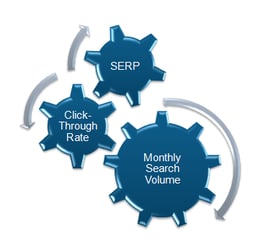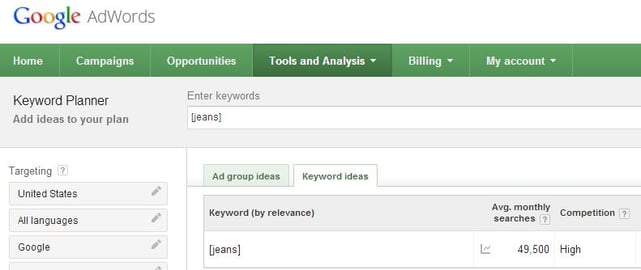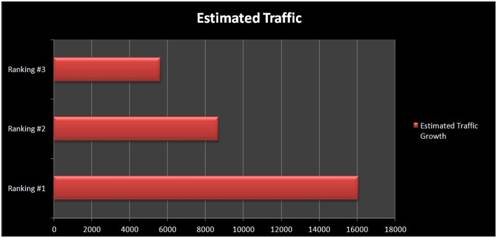 By now, everyone has heard of estimated traffic in one way or another. Whether it was called “website traffic predictions for 2014”, or “what traffic can we expect to get from this keyword”, or my favorite, “traffic”, we’ve all heard about it. Ever since Google went to “not provided”, it has become an estimated world and more and more of us report estimated traffic when it pertains to search. Unfortunately, I find myself encountering more individuals who just don’t seem to have a grasp of what estimated traffic for a keyword is, or how it’s generated. Hopefully, this article will give you a firm grasp on the basic concepts.
By now, everyone has heard of estimated traffic in one way or another. Whether it was called “website traffic predictions for 2014”, or “what traffic can we expect to get from this keyword”, or my favorite, “traffic”, we’ve all heard about it. Ever since Google went to “not provided”, it has become an estimated world and more and more of us report estimated traffic when it pertains to search. Unfortunately, I find myself encountering more individuals who just don’t seem to have a grasp of what estimated traffic for a keyword is, or how it’s generated. Hopefully, this article will give you a firm grasp on the basic concepts.
What Is Estimated Traffic?
Estimated traffic is exactly what it sounds like, a mathematical estimate of value for traffic pertaining to a website, keyword, or other search attribute. Estimated traffic for a keyword is based on the monthly search volume vs. search engine ranking position (SERP) and estimated click-through rate.
Math Behind Estimated Traffic: Search Volume, Ranking, and Click-Through Percentage
The math is pretty straight forward. You can estimate the traffic of a keyword by ranking when you multiply the monthly search volume of a keyword by the click-through rate from SERP. Let’s walk through the process using the keyword “jeans” as an example. The first step is to see what the search volume for the keyword “jeans” is. According to Google’s keyword planner, the monthly search volume is 49,500.

The second step is to determine which estimated click-through rate study you are going to use. I use to only use the 2010 Optify study but since the company went under, I have been using click-through data from Chitika. According to Chikita, here are the average click-through rates for positions one, two, and three in SERP.
Position #1: 32.5% of clicks
Position #2: 17.6% of clicks
Position #3: 11.4% of clicks
The last step is to take the monthly search volume of the keyword and multiply that by the average click-through percentage of the SERP. So, if you rank #1 for the keyword “jeans”, you receive an estimated 32.5% click-through of 49,500 monthly searches for 16,000 clicks per month. If you rank #2, you will receive 17.6% click-through for 8,712 clicks; if you rank #3, you will receive 11.4% click-through for 5.643.

 When estimating traffic for a site as a whole, you’ll want to create a list of all non-branded keywords the website ranks for or is looking to rank for, and do the process for each keyword.
When estimating traffic for a site as a whole, you’ll want to create a list of all non-branded keywords the website ranks for or is looking to rank for, and do the process for each keyword.
Understanding Click-through Percentages
Click-through percentage are never one hundred percent accurate when you are talking about organic search. Paid search does give completely accurate click-through percentages from where keywords rank in paid search. Impression, ranking, and click-through rates are provided to you by the network you are advertising on. With organic search, click-through rates vary when you compare branded keywords to non-branded keywords. Branded keywords will always have higher click-through rates. There are a number of different SEO platforms that have begun incorporating estimated traffic data directly in its platform to tell the story of keyword rankings ever since Google went “not provided”. My two favorite platforms that allow for customization of estimated traffic percentages are Conductor and Linkdex. Conductor’s TrueTraffic platform allows for consumer behavioral models (B2B, B2C, custom, etc.) to showcase estimated traffic for keywords. The platform from Linkdex has a competitive organic visibility tool with estimated Google searches and built-in geo-targeting capabilities.
I hope this article has given you some insights into how estimated traffic is done. Please feel free to add me to your circle on Google+ for more articles to come.
Are you an retail business in NYC looking for a Search Engine Optimization Agency? If so, contact us for more information on how we can help build your SEO strategy.



COMMENTS